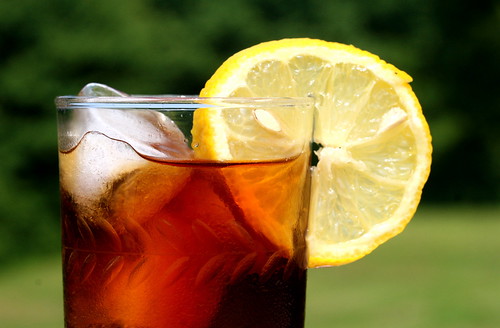Neither tinto de verano, nor beers on the terraces. The star drink of the summer season, during the Golden Age, was the host: a soda that one could enjoy while contemplating the mastery of Lope with its New art.
It was the host who was in charge of distributing it. He also had fruit, water and other merchandise in the lodge, originally located on the ground floor. comedy corral in which the theatrical works were represented. Without a doubt, the vendor contributed to the liveliness of the atmosphere: «[men and women] through the« guesthouse »(...) they sent each other something else than housed her with snow that was consumed with such relish on hot summer afternoons », as recounted in the book The staging in the commercial theaters of the Golden Age.

Photo by muffet / liz west.
What was this drink? Water, honey and cinnamon seem like the basic elementsAlthough, as each teacher has his own book, there are those who add other spices to it. And sometimes he even came, despite the fact that such a thing was not allowed in the comedy corrals. In the gastronomic blog of the newspaper The North of Castile They provide the following recipe: «For a pitcher (16 liters) take 15 liters of water, half a pound of yeast, 4 pounds of good honey and half a pound of spices divided into one part ginger, one part pepper, two parts of cinnamon, one of cloves and one of walnut ».
It seems, however, that it is one of many recipes for this drink, also called in various ways. The professor and physician Gerónimo Pardo, in Treatise on watered down wine and envinated water of 1661, he clarifies that "there were several names among the ancients, to signify the drink that today we call lodging as they are, hydromel, melicratum, acua mellis, etc., there were also several ways of composing it." And to cool it, the most common was to use ice and snow in the canteens, made of materials such as copper, tin or silver. Because what was really essential was to serve it cold. "It will be put in the cellar, well or cooler part than it can be," Prado recommended.
The connection between the house and the comedy corrals, something like the one between popcorn and the cinema, is evident when verifying that, by extension, some rooms were called with the name of “lodgers” (it happened in the Corral del Príncipe). Also as in the case of popcorn and movies, surely Neither does it house it nor its vendors fonentate silence preciselyA custom that the public located in the courtyard of the corrales did not have and that differentiated them from the spectators in the box.
References
- Medical Library: Ma - My.
- Corral de Comedias
- El Corral de Comedias de Almagro: Between fools the game goes
- Jose M. Ruano de la Haza. The staging in the commercial theaters of the Golden Age. Madrid: Castalia, 2000. Pages 38 to 41. Preview in Google Books.
- The host, queen of drinks
- Representation and public
Yes, snow or ice were obtained thanks to the snow pits, with huts on top if they were not in the high mountains, which there were, but what I do not understand, is that during the transport of many kms. from the high mountains to those wells, such as those in Valladolid, Cadiz, etc, etc ... the snow would not melt, and at the moment I only have speculations, as it could possibly be very compacted snow that was isolated with straw so that it did not was undone during the journey….